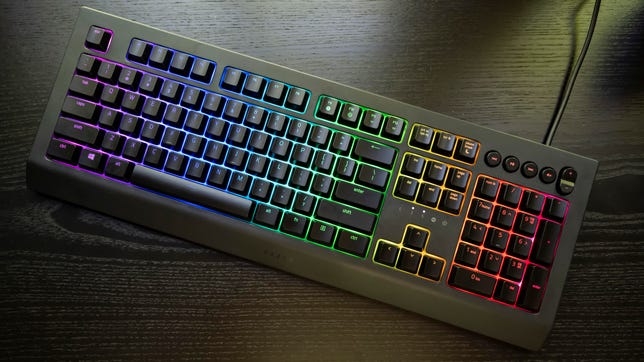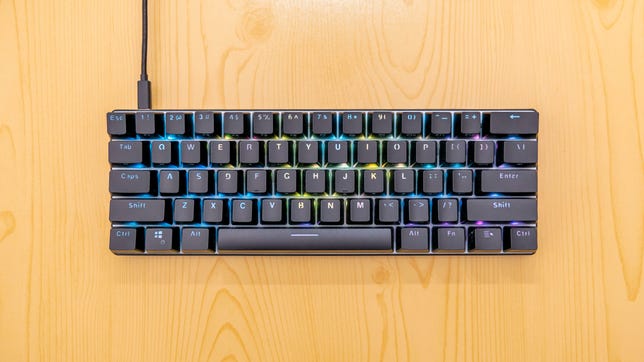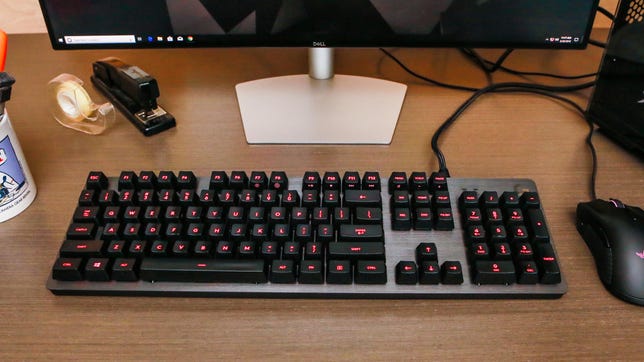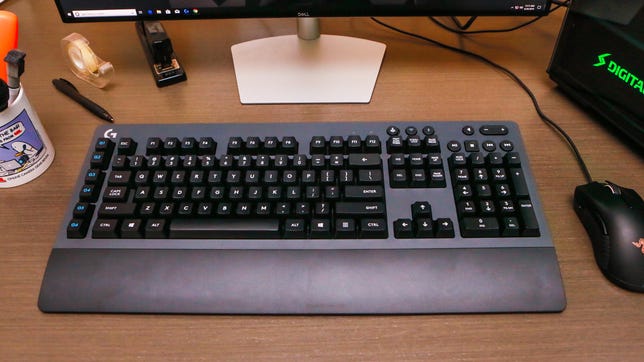Technologies
Best Gaming Keyboard Under $100 for 2023
Improve your stats with a good gaming keyboard that won’t break the bank.

A keyboard can make or break your PC gaming setup. Don’t let a bad one ruin your gaming experience. A new keyboard is an easy upgrade, especially considering the plethora of great options under $100. We tested tons of budget-friendly keyboards to help you decide which one is going to give you the most bang for your buck.
Just like picking out a new gaming mouse, getting the right gaming keyboard has a lot to do with personal preference — from ergonomic design (hello, wrist rest) to whether you prefer RGB lighting, mechanical keys, tactile feedback, programmable keys, dedicated media keys or so many other features that we can’t even begin to list them. To help narrow your keyboard design preferences, check out GameSpot’s glossary of keyboard terms.
Read more: Best Gaming Mouse Under $50 for 2023
It’s worth noting that Aukey, which makes one of our top picks, was booted from Amazon last year because it was one of several vendors reported to have solicited positive user reviews for gift cards. But since our experience with the quality and value of Aukey accessories has been positive, we continue to recommend its hardware.
If you’re most comfortable doing your office work on a membrane keyboard, the Cynosa might be the gaming keyboard for you. It’s a membrane keyboard, not mechanical, so the keys are quiet and definitely feel softer than the others here and some might find them mushy. Still, if you’re looking to use one keyboard for both work and play, this is a fine compromise for its $60 list price.
Many of the original Cynosa’s features carry over, including per-key RGB lighting — a rarity at this end of the market — and durable spill-resistant design. What’s new is a set of media keys added to the upper right corner. Razer also added cable routing under the keyboard so you can keep your desk a little tidier.
This is also one of the most programmable keyboards here. There are a lot of preset lighting effects to pick from and you can also create your own using the Synapse 3.0 software. There’s also Razer’s Hypershift feature that lets you set up a secondary set of functions for your keys that are accessed with a «shift» key you choose. You can also rebind keys and set macros with the software.
Whirlwind FX’s Atom 60% mechanical gaming keyboard isn’t too different from other similarly sized options. The compact build is a space saver, great if you need extra mousing room while you game. It’ll also slide easily into a backpack for travel. (It also has a removable braided USB-C cable to help with that.) The company offers a choice of three mechanical switches, and they’re all brilliantly lit with RGB LEDs.
The Atom’s backlighting, or more specifically the software that controls them, is where this little keyboard stands out. The thing is, you don’t even need the keyboard to use the software.
The SignalRGB app lets you set the keyboard’s lighting to have different effects during regular use and when media is playing including various games. The app has a library of game integrations to choose from. I tested the Battlefield V integration, for example, and it does things like turn the keyboard lights red when HP is low or green when you’re healed. The Fortnite integration will change the keyboard to pink and red when you take damage or purple when you add experience. There are a lot of games available and, if you really like to tinker, you can create your own integrations using the company’s open-platform lighting software.
However, the SignalRGB software lets you take things a step further by expanding the effects to your other RGB gaming peripherals. It supports more than 150 devices from Razer, Corsair, HyperX, Logitech, SteelSeries and others. You can also request others that aren’t supported yet.
Also, if you prefer a full-size keyboard, check out the company’s second-gen Element keyboard that has the same switch options but it has directional keys and a number pad.
Even on Logitech’s lower-end models such as the G413 backlit gaming keyboard, the company doesn’t cheap out on build quality and components. It uses the same Romer-G Tactile switches found on its more feature-filled models and has the same slim, simple and durable keyboard design with brushed aluminum-magnesium alloy top case. It has a braided USB cable with a USB passthrough port on the back right and channels underneath for mouse and headset cable management.
The tactile key switch is relatively quiet with no click when actuated, just a subtle bump and a short actuation. If you love to hear and feel your keypresses, this probably isn’t the best switch for you. There’s just one color for the backlight — red — but the backlighting is bright and the key font on this full-size keyboard is easy to read. Logitech includes 12 faceted keycaps, which is nice but we didn’t feel much difference.
The G413 is programmable with Logitech’s G Hub software, letting you set up macros and custom functions on the F1-F12 buttons and there’s a game mode that shuts off the Windows key. Overall it’s a more polished mechanical gaming keyboard than the others here, but it’s also pricier.
Finding a good wireless gaming keyboard can be difficult. These babies are a rarity because the last thing you want to do is potentially introduce lag into your performance. The G613’s Lightspeed wireless performs as well as wired and its battery life is stellar at up to 18 months on two AA-size batteries. That said, the keyboard has no backlight whatsoever, which while understandable for the power savings, no keyboard backlighting really kills the gaming experience in the dark. You do get six programmable buttons down the left side, so that’s something.
The G613 uses the same Romer-G Tactile mechanical switches as the G413, so everything I said about that one applies here. I happen to like the feel of this switch for gaming and typing, though I was in the minority for our testing. This wireless keyboard is definitely one you should try before you buy if you can.
The $50 G14 is one of the most affordable mechanical gaming keyboards available and Aukey has stepped up its game with the build quality and software without increasing prices. This TKL keyboard is chunky but still saves desk space since it doesn’t have a number pad; check out Aukey’s G12 if you want that feature.
Although the case is all plastic, it has the heft of a metal frame. Combined with the nonslip pads on the bottom, this keyboard won’t slide around while you’re gaming. Plus, there are two sets of flip-out feet at the back giving you three typing angles to choose from — something you don’t always find on pricier keyboards. And while its USB cable is attached to the body, Aukey did add routing on the bottom so you can send the cable out to the left, right or center.
The company’s blue clicky switches are good for both typing and gaming with a tactile bump you can feel and hear. These switches have a loud click to them, something to keep in mind if you share a workspace). Also, there is no pinging from the switch springs, unlike the slimmer full-size G12 keyboard, so all you really hear is their click. There is some key wobble but it’s relatively minor and overall it’s a solid typing experience.
The keycap legends are difficult to read with the backlight off. However, with 18 preprogrammed lighting options to choose from and four brightness settings, there’s little reason to have the lights off entirely while you’re working. You can always replace the keycaps, too, and Aukey includes a puller. Software for the keyboard can be used to create your own per-key RGB lighting, set up key macros or change key assignments and save multiple profiles. The G14 is a great place to start if you’re just getting into mechanical keyboards for work or play.
More gaming and WFH essentials
- Best Game Subscription Services
- Best Monitor Deals: Best Prices at Amazon, Best Buy, Newegg, More
- Best VPN 2022: VPNs Tested and Rated by Our Experts
- 3 Great VPNs for Xbox for 2023
-
Best Mac VPN for 2023
- Best Blue Light Blocking Glasses of 2023
- Best Standing Desk Converter for 2023
- 7 Must-Have Ergonomic Upgrades for Your Home Office
- Best Gaming Router for 2023
- Best Gaming PC for 2023
- Best Gaming Laptop for 2023
- Best Online Python Course for 2023
- Best Chromebook Deals
- Best Office Chairs for 2023
- Fastest VPN of 2023
- Best Desk Exercise Equipment for 2023
- Best Xbox Series X or Series S Accessories for 2023
Technologies
Today’s Wordle Hints, Answer and Help for Nov. 4, #1599
Here are hints and the answer for today’s Wordle for Nov. 4, No. 1,599.
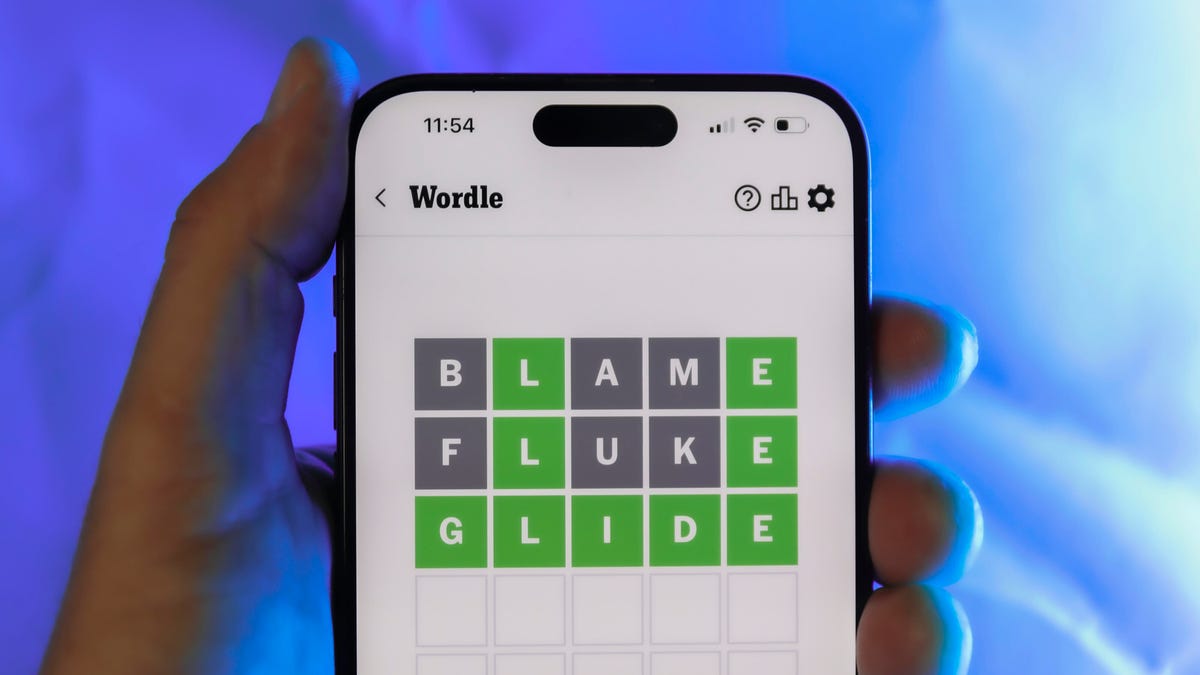
Looking for the most recent Wordle answer? Click here for today’s Wordle hints, as well as our daily answers and hints for The New York Times Mini Crossword, Connections, Connections: Sports Edition and Strands puzzles.
Today’s Wordle puzzle begins with one of the least-used letters in the alphabet. (Check our full list ranking the letters by popularity.) If you need a new starter word, check out our list of which letters show up the most in English words. If you need hints and the answer, read on.
Today’s Wordle hints
Before we show you today’s Wordle answer, we’ll give you some hints. If you don’t want a spoiler, look away now.
Wordle hint No. 1: Repeats
Today’s Wordle answer has one repeated letter.
Wordle hint No. 2: Vowels
Today’s Wordle answer has two vowels, but one is the repeated letter, so you’ll see that one twice.
Wordle hint No. 3: First letter
Today’s Wordle answer begins with V.
Wordle hint No. 4: Last letter
Today’s Wordle answer ends with E.
Wordle hint No. 5: Meaning
Today’s Wordle answer can refer to the place where something happens, especially an organized event such as a concert, conference, or sports event.
TODAY’S WORDLE ANSWER
Today’s Wordle answer is VENUE.
Yesterday’s Wordle answer
Yesterday’s Wordle answer, Nov. 3, No. 1598 was AWOKE.
Recent Wordle answers
Oct. 30, No. 1594: LATHE
Oct. 31, No. 1595: ABHOR
Nov. 1, No. 1596: MOTEL
Nov. 2, No. 1597: RABID
Technologies
Why You Should Consider a Burner Phone for Your Holiday Travel This Year
If you’re traveling internationally, carrying a simple phone that doesn’t store personal information can be a smart move when entering the US.
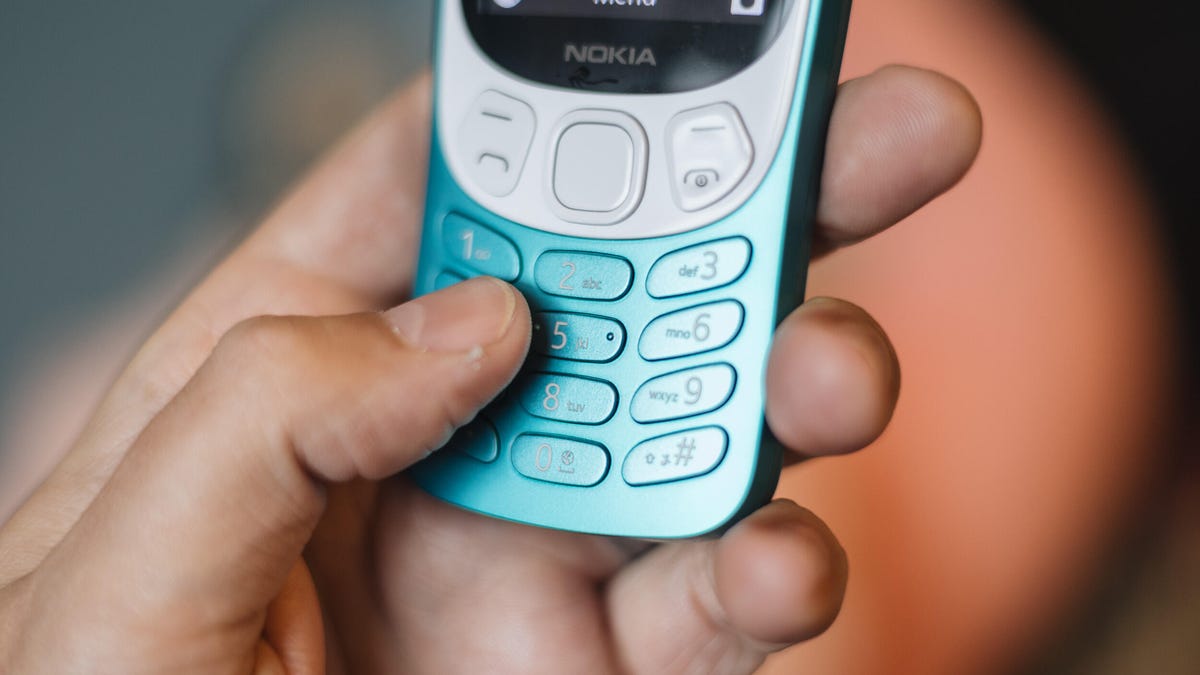
Travel is challenging enough, and this year adds a new hurdle. US border agents are stepping up searches of travelers entering the country — even US citizens returning from overseas — and that extends to their personal devices. These searches can go beyond a quick look, giving agents the authority to copy or analyze a phone’s contents.
According to new figures from US Customs and Border Protection, nearly 15,000 device searches were carried out between April and June, with over 1,000 of them using advanced tools that copy or analyze what’s on a phone. The rising numbers raise questions about how much personal data travelers may be handing over without realizing it.
So what’s the solution? A burner phone. It’s the ultimate defense for keeping your personal data private when you travel, ensuring you stay connected without handing over your entire digital life at the border.
But the appeal goes beyond privacy. A stripped-down phone is also the perfect escape from the constant notifications and screen-time vortex of your primary device. Even celebrities such as Conan O’Brien have embraced simpler phones to cut through the noise. Whether you’re crossing a border or just trying to cross the street without distractions, a burner might be the smartest tech you own.
Read more: Best Prepaid Phone of 2025
Although carriers have offered prepaid phones since the ’90s, «burner phones» or «burners» became popular in the 2000s following the celebrated HBO series The Wire, where they helped characters avoid getting caught by the police. Although often portrayed in that light, burners aren’t only used by criminals; they’re also used anyone concerned with surveillance or privacy infringement.
What is a burner phone, and how does it work? Here’s everything you need to know about burners and how to get one.
Don’t miss any of our unbiased tech content and lab-based reviews. Add CNET as a preferred Google source.
What is a burner phone?
A burner phone is a cheap prepaid phone with no commitments. It comes with a set number of prepaid call minutes, text messages or data, and it’s designed to be disposed of after use.
Burners are contract-free, and you can grab them off the counter. They’re called burner phones because you can «burn» them (trash them) after use, and the phone can’t be traced back to you, which makes them appealing to criminals. Burner phones are typically used when you need a phone quickly, without intentions of long-term use.
Burners are different from getting a regular, contract-bound cellphone plan that requires your information to be on file.
Why should you use a burner phone?
Burner phones are an easy way to avoid cellphone contracts or spam that you get on your primary phone number. Burners aren’t linked to your identity, so you can avoid being tracked down or contacted.
You don’t have to dispose of a burner phone after use. You can add more minutes and continue using it. Burner phones can still function as regular phones, minus the hassle of a contract.
You can also get a burner phone as a secondary phone for a specific purpose, like having a spare phone number for two-factor authentication texts, for business, or to avoid roaming charges while traveling. Burner phones are often used by anyone concerned with privacy.
Read more: The Data Privacy Tips Digital Security Experts Wish You Knew
Burner phones, prepaid phones, smartphones and burner SIMs: What’s the difference?
Burner phones are cheap phones with simple designs that lack the bells and whistles of a smartphone. Because they’re designed to be disposable, you only get the essentials, as seen by the most common version, the flip phone.
All burner phones are prepaid phones, but not all prepaid phones are burners. What sets a burner apart is that you won’t have to give away any personal information to get one, and it won’t be traceable back to you. Again, a burner phone is cheap enough to be destroyed after use.
Prepaid smartphones are generally low-end models. You can use any unlocked smartphone with prepaid SIM cards, essentially making it a prepaid phone.
If you want a burner, you don’t necessarily have to buy a new phone. You can get a burner SIM and use it with an existing phone. Burner SIMs are prepaid SIMs you can get without a contract or giving away personal information.
Where can you buy a burner phone?
Burner phones are available at all major retail outlets, including Best Buy, Target and Walmart. They’re also often available at convenience stores like 7-Eleven, local supermarkets, gas stations and retail phone outlets like Cricket and Metro.
You can get a burner phone with cash, and it should cost between $10 and $50, although it may cost more if you get more minutes and data. If you’re getting a burner phone specifically to avoid having the phone traced back to you, it makes sense to pay with cash instead of a credit card.
If you just want a prepaid secondary phone, you can use a credit card. Just keep in mind that credit cards leave a trail that leads back to you.
There are also many apps that let you get secondary phone numbers, including Google Fi and the Burner app. However, these aren’t burners necessarily because the providers typically have at least some of your personal information.
If you’re just looking to get a solid prepaid phone without anonymity, check out our full guide for the best prepaid phone plans available. We also have a guide for the best cheap phone plans.
Technologies
Chrome Autofill Now Supports Passport, Driver’s License and Vehicle Info
Soon, you’ll never need to remember anything ever again.
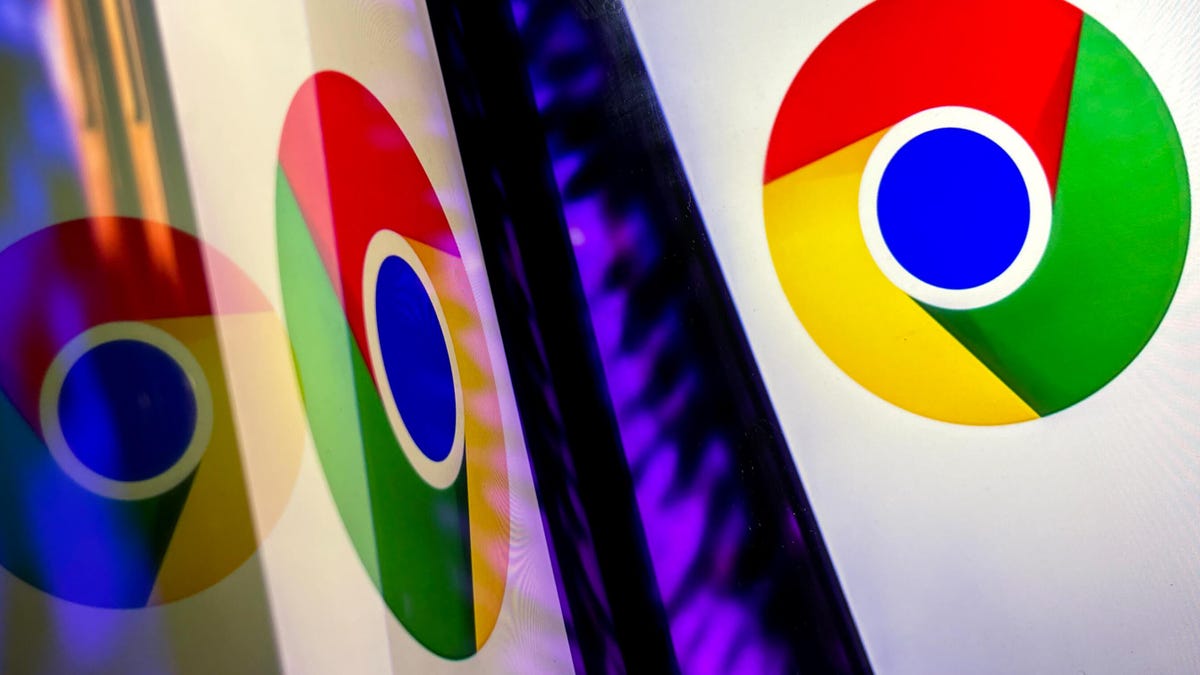
Computer users are accustomed to web browsers autofilling everything from names and addresses to credit card numbers. Now, Google Chrome is adding new enhanced autofill options that allow users to automatically populate fields for passports, driver’s licenses, and their vehicle’s license plate or VIN, Google said in a blog post on Monday.
Desktop users must choose to turn on the feature, which is called enhanced autofill. Otherwise, it stays off. To turn it on, open Chrome, and at the top right of your browser, select more, then settings, then autofill and passwords. Finally, choose enhanced autofill and turn it in.
Google says Chrome now can «better understand complex forms and varied formatting requirements, improving accuracy across the web.» The company also says that enhanced autofill will be «private and secure.»
This enhanced autofill update is available in all languages, and more data options will be supported in the coming months.
A representative for Google said the company had no additional comment.
Don’t miss any of our unbiased tech content and lab-based reviews. Add CNET as a preferred Google source.
Chrome is a critical component in Google’s business. The web browser, currently the most popular in the world with a 73% market share, according to GlobalStats, provides the company with valuable user data that it uses to sell advertising. Advertising is how Google makes the majority of its revenues. New features help keep users loyal to Chrome, making it more difficult for them to switch to other browsers, including those from companies like Perplexity and OpenAI.
-

 Technologies3 года ago
Technologies3 года agoTech Companies Need to Be Held Accountable for Security, Experts Say
-

 Technologies3 года ago
Technologies3 года agoBest Handheld Game Console in 2023
-

 Technologies3 года ago
Technologies3 года agoTighten Up Your VR Game With the Best Head Straps for Quest 2
-

 Technologies4 года ago
Technologies4 года agoVerum, Wickr and Threema: next generation secured messengers
-

 Technologies4 года ago
Technologies4 года agoBlack Friday 2021: The best deals on TVs, headphones, kitchenware, and more
-

 Technologies4 года ago
Technologies4 года agoGoogle to require vaccinations as Silicon Valley rethinks return-to-office policies
-

 Technologies4 года ago
Technologies4 года agoOlivia Harlan Dekker for Verum Messenger
-

 Technologies4 года ago
Technologies4 года agoiPhone 13 event: How to watch Apple’s big announcement tomorrow

